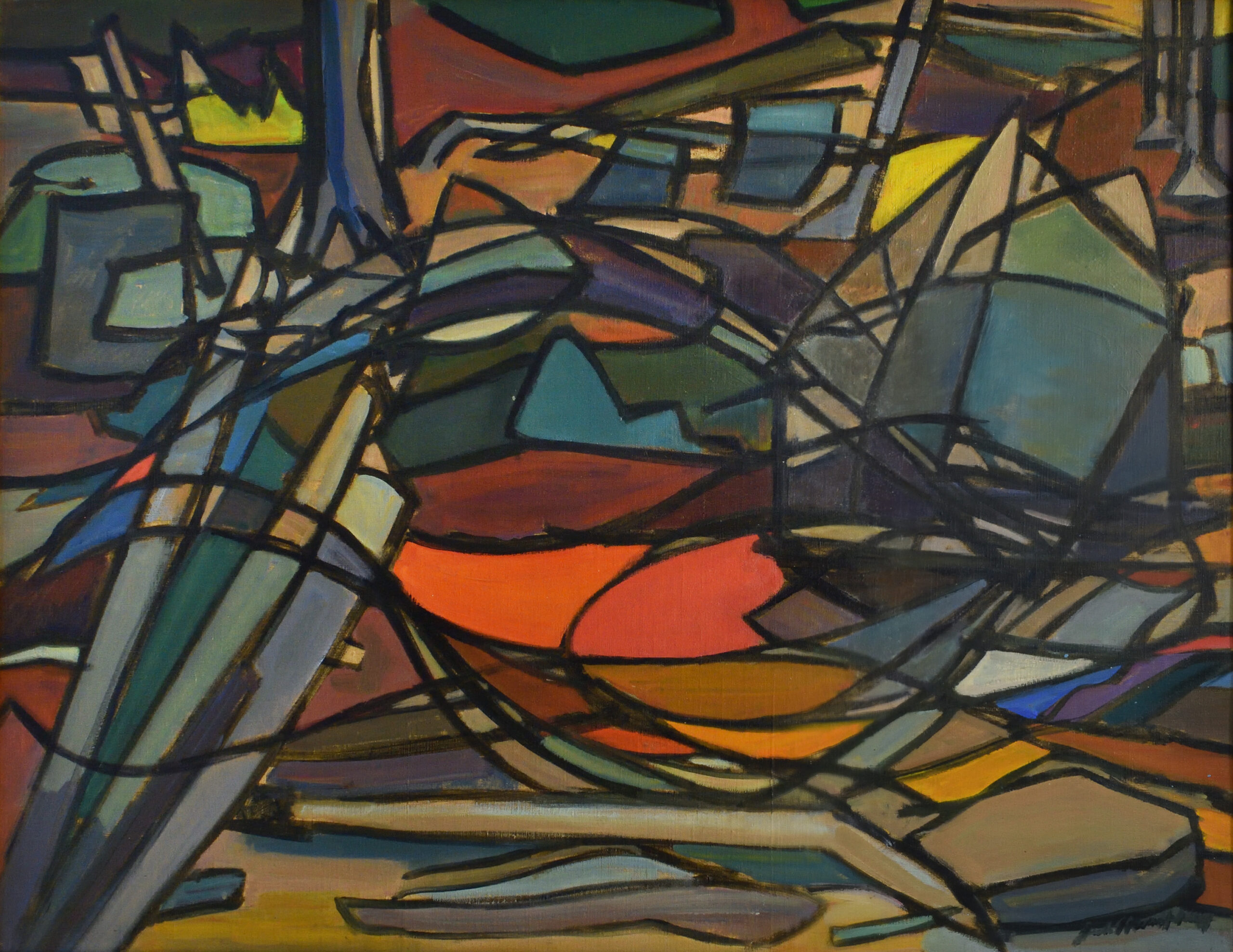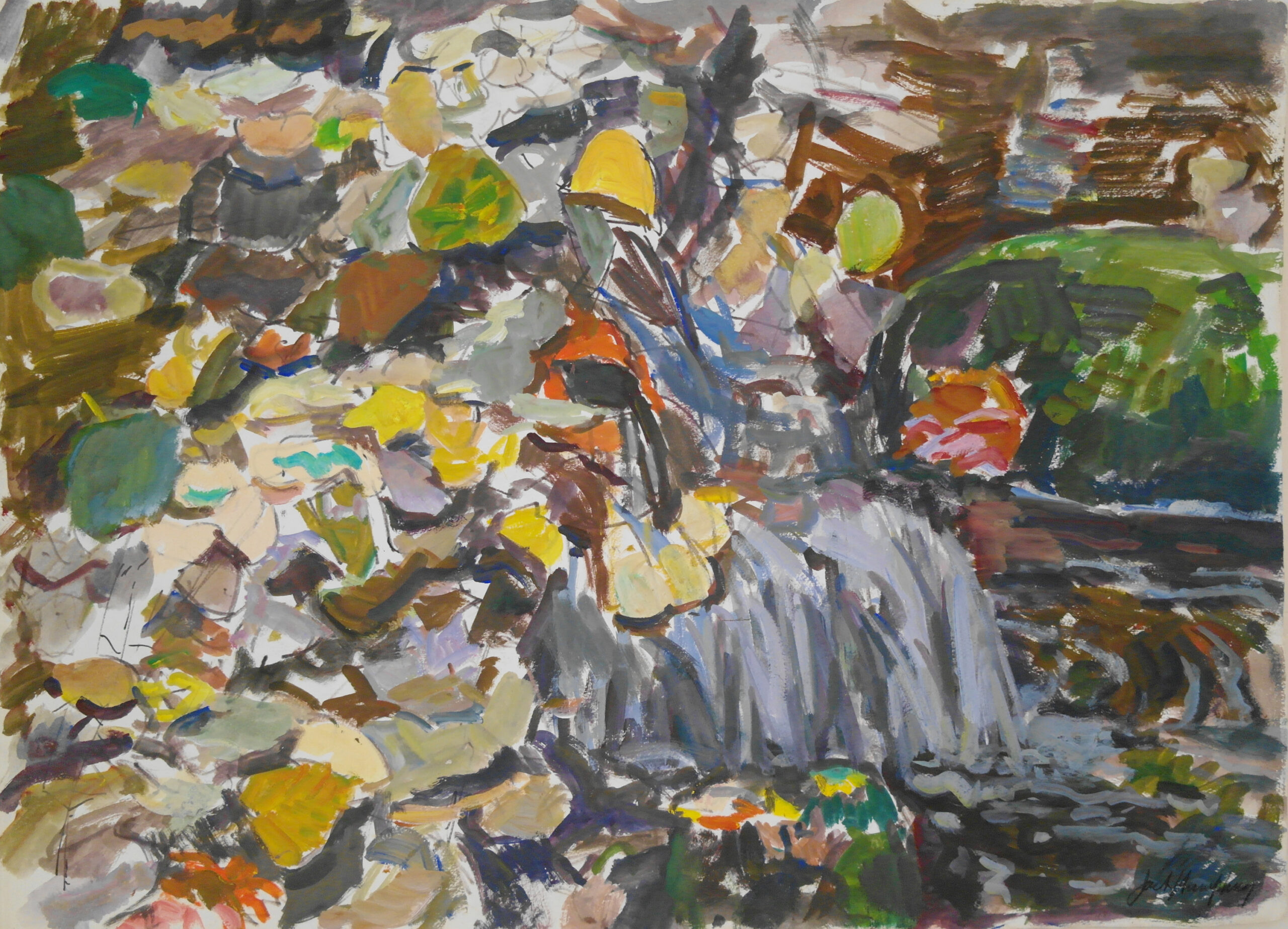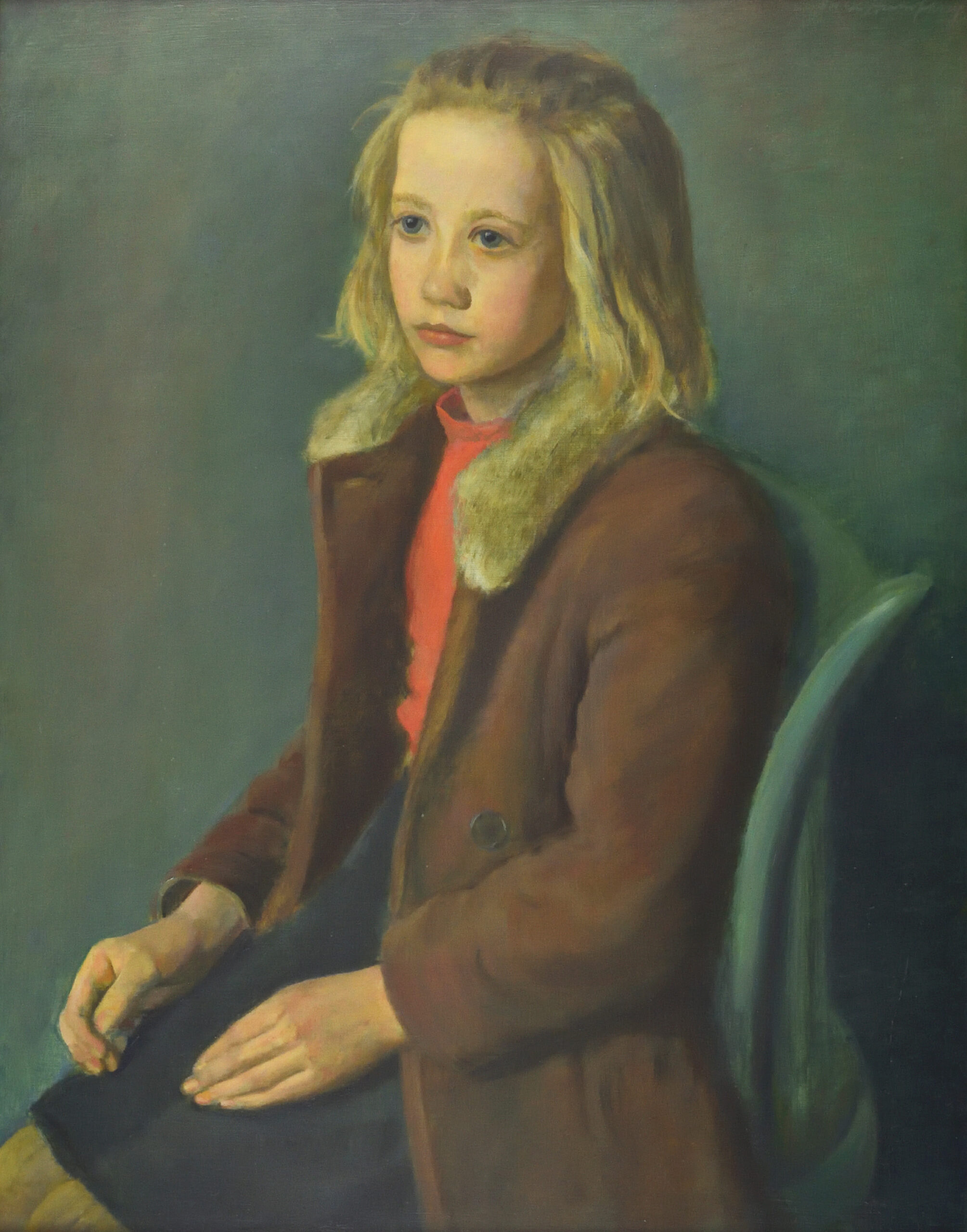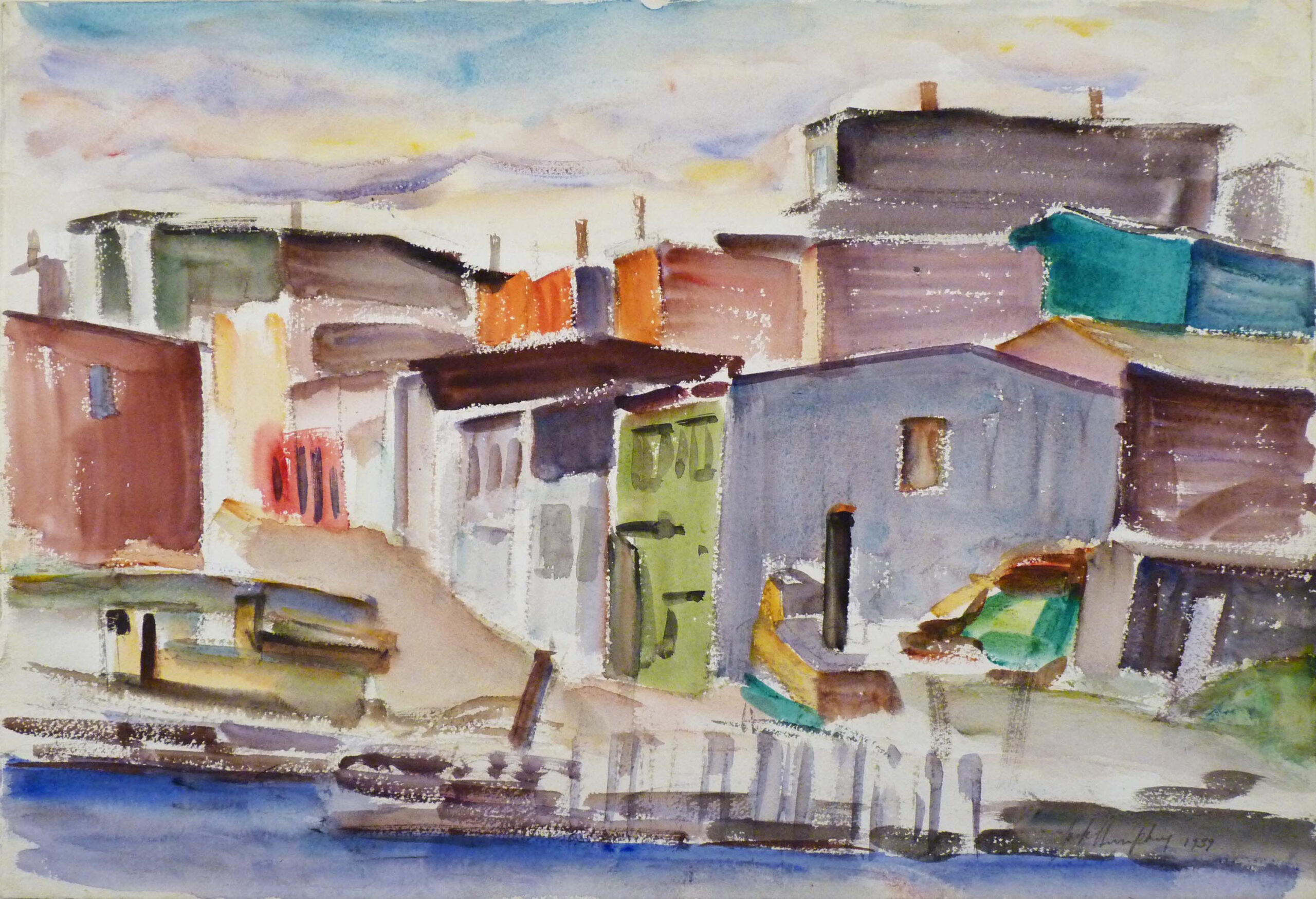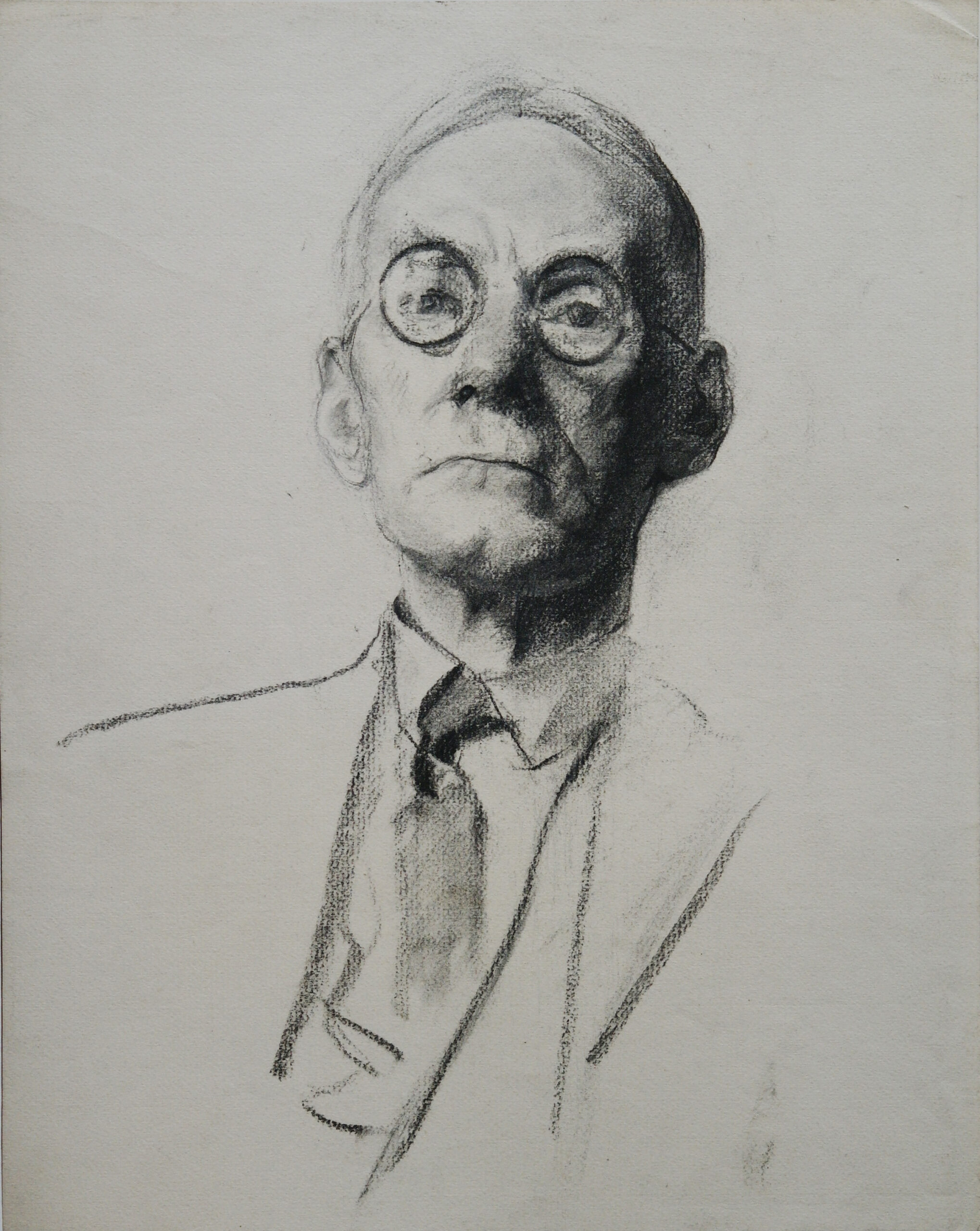After almost a decade of study in Boston and New York as well as a year’s travel in Europe, Jack Humphrey returned to his home in Saint John, NB, where he began to paint the local people, cityscape and landscape in this new style. It was a departure from the traditional ways artists rendered and presented this region. Humphrey’s work did not necessarily depend on realistic representations of his subjects but focused on the composition of formal elements of art – line, colour, shape – as well as an experimentation with materials and techniques. It was this change in aesthetic vision that helped to set in place within the province, an extraordinary flowering of art in the second quarter of the 20th century.
The New Brunswick Museum contains a major grouping of about 800 pieces of Humphrey’s work: over 400 drawings, 300 paintings, about forty pastel, almost twenty original artist’s prints and seven sketchbooks. This vast resource allows an unprecedented opportunity to understand the development of his creative vision, from student days in the early 1920s, to the last painting he completed outdoors, in October 1966. Having a broad cross-section of Humphrey’s work permits the New Brunswick Museum to be a centre for the advanced study of the career and artistic output of one of Canada’s most important artists.
Between 1931 and 1967, Humphrey’s name became synonymous with watercolour views of Saint John and the towns and villages along the Fundy coast as well as the Saint John (Wolastoq) and the Kennebecasis Rivers. As he garnered an increasingly national reputation for the quality of his work, those depictions became the way that New Brunswick was perceived and understood across the country. Not long after his return from travelling, he led children’s art classes where he found sitters for a powerful series of portraits that achieved wide acclaim. Some national recognition early in the 1950s and a study year in France allowed him to expand his repertoire as his work forayed more and more into subtle, painterly abstraction.
Humphrey’s unexpected death in 1967, at the height of his career and in the middle of his first national travelling exhibition, cut short the promise of a distinguished and influential place in Canadian art. Interest in Humphrey and his work is reviving…the concerns and accomplishments of his compelling creativity are insistent in their currency and they continue to provide evocative messages of identity and place that are as pertinent today as they were almost a century ago.




